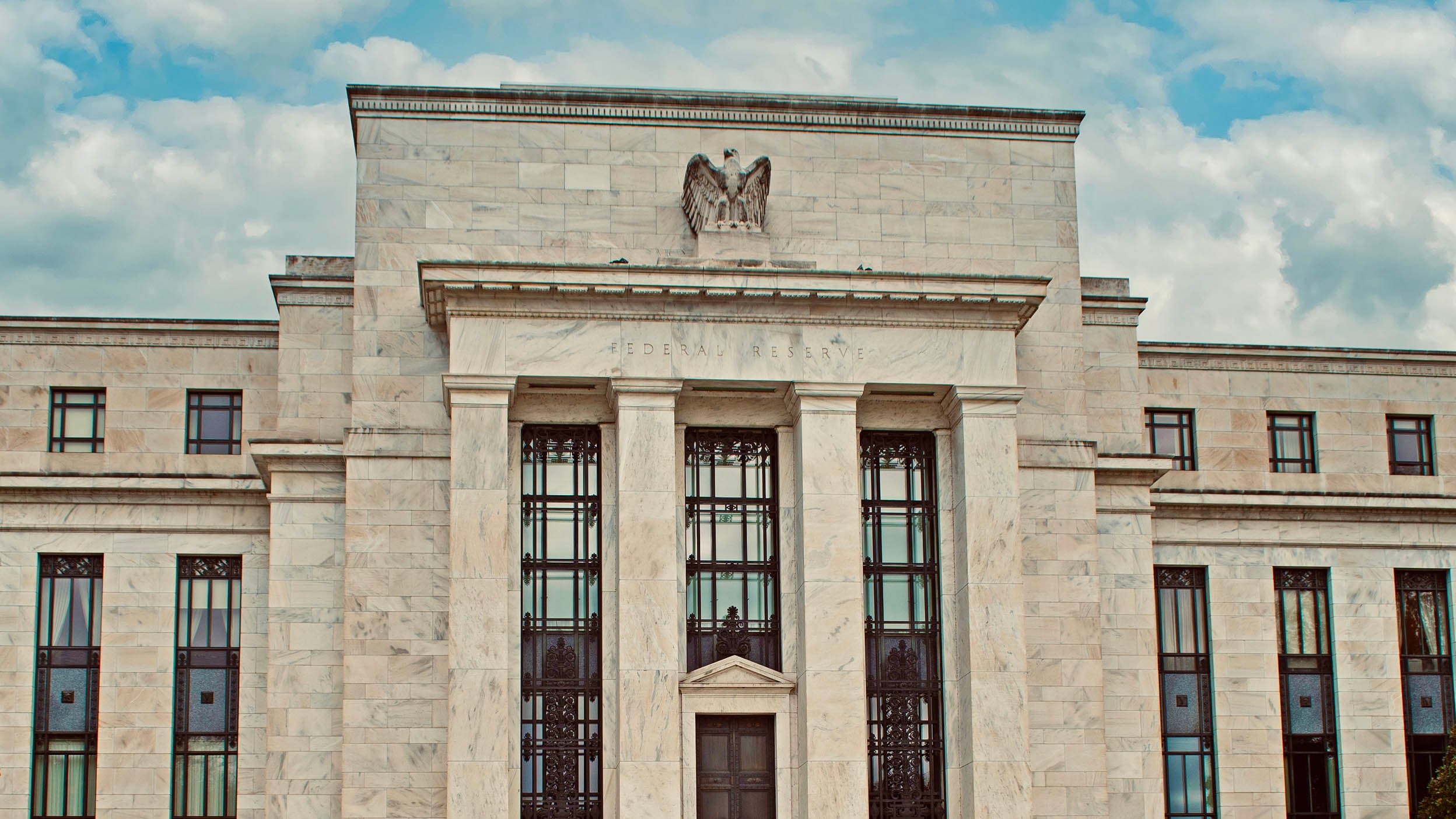
Markets and Economy Will high tariffs push the US into recession?
As a trade war rages, a massive market sell-off in the US and around the world raises many questions for investors.

The Federal Reserve (Fed) cut rates by 50 basis points last week to keep the US economy in good shape and avoid falling behind the curve.
The Fed’s start of easing is critical in terms of adding to the environment of monetary policy accommodation beginning in much of the world.
However, despite accommodative monetary policy, markets are swimming in a sea of uncertainty over the next several months.
First, mea culpa. I was wrong. I was confident that after passing on an opportunity to cut rates in July, the Federal Reserve (Fed) wouldn’t deliver a jumbo interest rate cut in September. But alas, we Americans like to supersize more than even I thought. And so — despite 50 basis point cuts being used in modern times as “crisis cuts” (2001, 2007, and 2020) — the Fed chose to cut 50 basis points last week as a “preemptive” cut, one intended to keep the US economy in good shape and avoid falling behind the curve and into recession.
What’s more, the Fed’s “dot plot” revealed plans for significant easing ahead: The projected year-end median policy rate was revised down to 4.4% for 2024 (from 5.1%), 3.4% for 2025 (from 4.1%), and 2.9% for 2026 (from 3.1%), where it’s expected to stay in 2027.1
Here are my key takeaways from Federal Reserve Chair Jay Powell’s press conference:
Powell’s term du jour is “recalibrate.” That replaces “data dependent” and before it “transitory” in the Federal Reserve Bank lexicon. It’s an acknowledgment that monetary policy needed to change to reflect a change in conditions. But which conditions? Fed Governor Chris Waller tried to reassure by saying it was progress on disinflation; he shared that the Personal Consumption Expenditures (PCE) price index was ”softening much faster than I thought it was going to” which “put me over the edge to say, look, I think 50 (basis points) is the right thing to do.”2 However, markets don’t seem entirely convinced, especially since Powell indicated concerns about maintaining the health of the labor market in explaining the Fed decision.
While the Fed was busy kick-starting its easing cycle with a jumbo cut, the Bank of England decided last week to keep rates as is after starting its easing cycle last month with a normal-sized cut.
The Bank of Japan also held rates steady last week, declining to hike more after market turbulence last month. Bank of Japan Governor Kazuo Ueda explained the need to pause, “The outlook for overseas economic development is highly uncertain. Markets remain unstable. We need to scrutinize such developments carefully for the time being.”3
Also last week, Norges Bank decided to defer the start of its easing cycle while the Bank of Brazil decided to hike rates, concerned that its economy is heating up.
So where do we go from here?
Most Western developed economies have begun easing or will begin it soon. The Fed’s start of easing is critical in terms of adding to the environment of monetary policy easing beginning in much of the world. This creates an accommodative climate that’s typically supportive of risk assets. However, asset class performance in the next several months will likely depend on whether markets think the US and other major economies can avoid a recession and experience an economic re-acceleration.
There are legitimate concerns about recession. Monetary policy was very restrictive for some time. FedEx, one of those bellwether stocks that can give us insight into the state of the economy, recently guided expectations downward. And the S&P Global PMI Survey for the US shows a manufacturing sector that has moved deeper into contraction.
However, I’m in the camp that believes that the US will avoid a recession. The Citigroup US Economic Surprise Index, while still in negative territory, has risen materially since late August. And credit spreads are suggesting that a recession is not in the offing. The ICE Bank of America US High Yield Option-Adjusted Spread hit a recent peak of 3.93% on Aug. 5.4 Since Sept. 10, spreads have fallen significantly, down to 3.1% on Sept. 19.5 This is a very low level relative to history. It tells me that the Fed is not far behind the curve and that its 50-basis-point cut has increased confidence that the US should avoid a recession.6 And the S&P Global US Services PMI reading remains strong.
As a case study in how this could potentially play out, I previously wrote about the 1995-96 playbook, and I’m doing it again today because I find it so instructive — it was the last time the Fed tightened and successfully avoided a recession. As a reminder:
The S&P 500 gained 11.32% in the six months after the Fed began easing.7
In terms of capitalization, small caps modestly underperformed large caps during that six-month period. The Russell 2000 Index rose 9.05% while the Russell 1000 Index returned 11.46%.7
In terms of styles, for the six months after the Fed began to ease rates, the value style modestly outperformed the growth style; the Russell 3000 Value Index rose 12.0% while the Russell 3000 Growth Index rose 10.48%.7 This was true in the large-cap space as well; during that six-month period, the Russell 1000 Growth rose 10.66% (price return) and the Russell 1000 Value rose 12.31%.7
In terms of sector performance in the first six months of the Fed’s 1995 easing cycle, health care was the best performing sector in the S&P 500, returning 26.06% during the period.7 A number of S&P 500 sectors — including energy, industrials, financials, utilities, and consumer staples — all posted double-digit returns for that period. However, consumer discretionary posted an anemic gain of 2.91%, and the materials sector was essentially flat.7
Both European and UK equities posted solid gains but modestly underperformed US stocks. The STOXX Europe 600 Index rose 10.05% and the FTSE 100 Index gained 9.33% during the six-month period.7 However, emerging markets equities experienced worse performance, posting a modest loss for the period — although that was due to some country-specific issues such as the Mexican peso crisis.
The Bloomberg US Aggregate Total Return Index rose 5.28% and the Bloomberg High Yield Total Return Index rose 6.02% in the six months after the Fed began easing.7
The FTSE NAREIT Index rose 6.89% during this six-month period.
The US Dollar Index began strengthening in the summer of 1995 as the Fed began to cut. This may seem surprising, but it followed a large decline for the dollar earlier in the year as a result of the Mexican peso crisis. The strengthening that began later in the year likely reflected a normalization once the crisis began to resolve.
The spot price of gold rose 2.88% in the first six months after the Fed began easing and then fell more than 3.5% in the following six-month period.7
My conclusion is that economic conditions were different back in 1995, with unemployment higher relative to today and a less resilient consumer. So while tightening was more aggressive in the most recent Fed cycle — hiking rates by 525 basis points in 2022-2023 versus 300 basis points in 1994-1995 — today’s economy has been more capable of withstanding the pressure. Also, rate cut expectations are very different today — there is an expectation of 150 basis points in cuts through the end of 20258 — and perhaps far more than that given Chicago Fed President Austan Goolsbee’s comments that he expects “many more” rate cuts over the next year — which would likely provide a far more powerful boost to risk assets in coming months than the tepid 75 basis points in cuts provided by the Fed from July 1995 through January 1996.
I expect Canada, the UK, and the eurozone to also avoid recession. Not all data is positive, but I still believe real wage growth and monetary easing can help slowing economies to soon re-accelerate. And despite recent weakening in the eurozone, the ICE Bank of America Euro High Yield Index Option-Adjusted Spread is at a relatively low level, suggesting the economy will avoid recession. As far as can be seen in the data, these economies are getting the policy prescription they need based on their respective economic conditions.
However, despite accommodative monetary policy, markets are swimming in a sea of uncertainty over the next several months. There's the US presidential election on Nov. 5 — and the very real potential for a US government shutdown in December. We have the UK nervously awaiting the release of the Budget next month, having been warned by the new Labour government that the financial situation is more dire than had been expected. (In fact, the GfK UK Consumer Confidence indicator fell sharply to -20 in September from -13 in both August and July, and is now at its lowest level in six months, with the autumn Budget seemingly the driver of this drop.9) And we have significant political uncertainty in the eurozone and even Canada; we also can’t forget a new leader must soon be chosen in Japan. We also have the Middle East hurtling towards a full-blown war after a serious escalation in hostilities last week. At the same time, we have seen an escalation in hostilities in the Russia-Ukraine War. Add to that uncertainty about when and how much central banks will cut, and we have a recipe for heightened volatility in the next several months.
So now, more than ever, is a time for diversification, in my opinion. Yes, I believe we are likely to see equities perform well, but I anticipate significant volatility given all the unpredictability in the near term. So I favor exposure to a variety of fixed income sub-asset classes such as investment grade credit, high yield and municipal bonds, which may benefit from the solid economic backdrop and the falling rate environment. And I also favor exposure to alternatives, which can offer diversification benefits through lower correlations to traditional stocks and bonds. Areas like real estate offer income and upside potential as rates fall. And gold can serve as a hedge against geopolitical risk as well as government budgets that are increasingly strained. As we brace for the next several months, the best approach may be to simply keep calm, stay diversified, and look for mispricing opportunities.
Source: Federal Reserve Board of Governors, Sept. 18, 2024
Source: Reuters, US inflation data cemented big cut for one Fed official, dissent for another,” Sept. 20, 2024
Source: Reuters, “BOJ Governor Ueda's comments at news conference,” Sept.20, 2024
Source: Bloomberg, as of Sept. 23, 2024
Source: Bloomberg, as of Sept. 23, 2024
Source: St. Louis Fed Research Department, as of Sept. 20, 2024
Source: Bloomberg, L.P., as of Sept. 33, 2024. Data represents performance from July 6, 1995, to Jan. 5, 1996, which were the first six months after the Fed began to ease on July 6, 1995.
Source: Federal Reserve Board of Governors Summary of Economic Projections, Sept. 18, 2024
Source: Bloomberg, as of Sept. 23, 2024

As a trade war rages, a massive market sell-off in the US and around the world raises many questions for investors.

With policy uncertainty rattling markets and consumer sentiment, it’s important to remember the market's long-term growth throughout its history.

There are signs of softening global growth prospects and rising economic policy uncertainty, plus a tectonic shift in fiscal stimulus around the globe.
Important information
NA3880975
Image: Douglas Rissing / Getty
All investing involves risk, including the risk of loss.
Past performance does not guarantee future results.
Investments cannot be made directly in an index.
Diversification does not guarantee a profit or eliminate the risk of loss.
This does not constitute a recommendation of any investment strategy or product for a particular investor. Investors should consult a financial professional before making any investment decisions.
The US Dollar Index measures the value of the US dollar relative to the majority of its most significant trading partners.
Disinflation, a slowing in the rate of price inflation, describes instances when the inflation rate has reduced marginally over the short term.
Personal consumption expenditures (PCE), or the PCE Index, measures price changes in consumer goods and services. Expenditures included in the index are actual US household expenditures. Core PCE excludes food and energy prices.
The Citi Economic Surprise indexes are quantitative measures of economic news, defined as weighted historical standard deviations of data surprises; a positive reading of the Economic Surprise Index suggests that economic releases have on balance been beating consensus.
Alternative products typically hold more non-traditional investments and employ more complex trading strategies, including hedging and leveraging through derivatives, short selling and opportunistic strategies that change with market conditions. Investors considering alternatives should be aware of their unique characteristics and additional risks from the strategies they use. Like all investments, performance will fluctuate. You can lose money.
The risks of investing in securities of foreign issuers, including emerging market issuers, can include fluctuations in foreign currencies, political and economic instability, and foreign taxation issues.
In general, stock values fluctuate, sometimes widely, in response to activities specific to the company as well as general market, economic and political conditions.
Fixed income investments are subject to credit risk of the issuer and the effects of changing interest rates. Interest rate risk refers to the risk that bond prices generally fall as interest rates rise and vice versa. An issuer may be unable to meet interest and/or principal payments, thereby causing its instruments to decrease in value and lowering the issuer’s credit rating.
Fluctuations in the price of gold and precious metals may affect the profitability of companies in the gold and precious metals sector. Changes in the political or economic conditions of countries where companies in the gold and precious metals sector are located may have a direct effect on the price of gold and precious metals.
The health care industry is subject to risks relating to government regulation, obsolescence caused by scientific advances, and technological innovations.
High yield bonds, or junk bonds, involve a greater risk of default or price changes due to changes in the issuer’s credit quality. The values of junk bonds fluctuate more than those of high quality bonds and can decline significantly over short time periods.
Municipal securities are subject to the risk that legislative or economic conditions could affect an issuer’s ability to make payments of principal and/ or interest.
Investments in real estate-related instruments may be affected by economic, legal, or environmental factors that affect property values, rents or occupancies of real estate. Real estate companies, including REITs or similar structures, tend to be small and mid-cap companies and their shares may be more volatile and less liquid.
Stocks of small- and mid-sized companies tend to be more vulnerable to adverse developments, may be more volatile, and may be illiquid or restricted as to resale
A spot price is the current market price at which an asset is bought or sold for immediate payment and delivery.
Spread represents the difference between two values or asset returns.
Tightening monetary policy includes actions by a central bank to curb inflation.
Volatility is a statistical measurement of the magnitude of up and down asset price fluctuations over time.
The STOXX® Europe 600 Index represents large-, mid-, and small-capitalization companies across 17 countries of the European region.
The FTSE 100 Index includes the 100 largest companies in terms of capitalization listed on the London Stock Exchange.
The GFK UK Consumer Confidence Indicator (Consumer Confidence Index) measures overall consumer confidence in the UK.
The ICE Bank of America Euro High Yield Index tracks the performance of euro-denominated below-investment grade corporate debt publicly issued in the euro domestic or Eurobond markets.
The Russell 1000®Growth Index, a trademark/service mark of the Frank Russell Co.®, is an unmanaged index considered representative of large-cap growth stocks.
The Russell 1000® Value Index, a trademark/service mark of the Frank Russell Co.®, is an unmanaged index considered representative of large-cap value stocks.
The Russell 3000® Value Index, a trademark/service mark of the Frank Russell Co.®, is an unmanaged index considered representative of US value stocks.
The Russell 3000® Growth Index, a trademark/service mark of the Frank Russell Co.®, is an unmanaged index considered representative of US growth stocks.
A value style of investing is subject to the risk that the valuations never improve or that the returns will trail other styles of investing or the overall stock markets.
The Russell 2000® Index, a trademark/service mark of the Frank Russell Co.®, is an unmanaged index considered representative of the US small-cap stock market.
A basis point is one-hundredth of a percentage point.
Correlation is the degree to which two investments have historically moved in relation to each other.
Credit spread is the difference in yield between bonds of similar maturity but with different credit quality.
The Federal Reserve’s “dot plot” is a chart that the central bank uses to illustrate its outlook for the path of interest rates.
Inflation is the rate at which the general price level for goods and services is increasing.
Monetary easing refers to the lowering of interest rates and deposit ratios by central banks.
Option-adjusted spread (OAS) is the yield spread that must be added to a benchmark yield curve to discount a security’s payments to match its market price, using a dynamic pricing model that accounts for embedded options.
A policy rate is the rate used by central banks to implement or signal their monetary policy stance.
A risk asset is generally described as any financial security or instrument that carries risk and is likely to fluctuate in price.
Purchasing Managers’ Indexes (PMI) are based on monthly surveys of companies worldwide and gauge business conditions within the manufacturing and services sectors.
The Bloomberg US Aggregate Total Return Index is an unmanaged index considered representative of the US investment grade, fixed-rate bond market. The Bloomberg High Yield Total Return Index covers the universe of fixed-rate, non-investment grade debt.
The FTSE NAREIT Index is an unmanaged index considered representative of US REITs.
The opinions referenced above are those of the author as of Sept. 23, 2024. These comments should not be construed as recommendations, but as an illustration of broader themes. Forward-looking statements are not guarantees of future results. They involve risks, uncertainties and assumptions; there can be no assurance that actual results will not differ materially from expectations.
This link takes you to a site not affiliated with Invesco. The site is for informational purposes only. Invesco does not guarantee nor take any responsibility for any of the content.